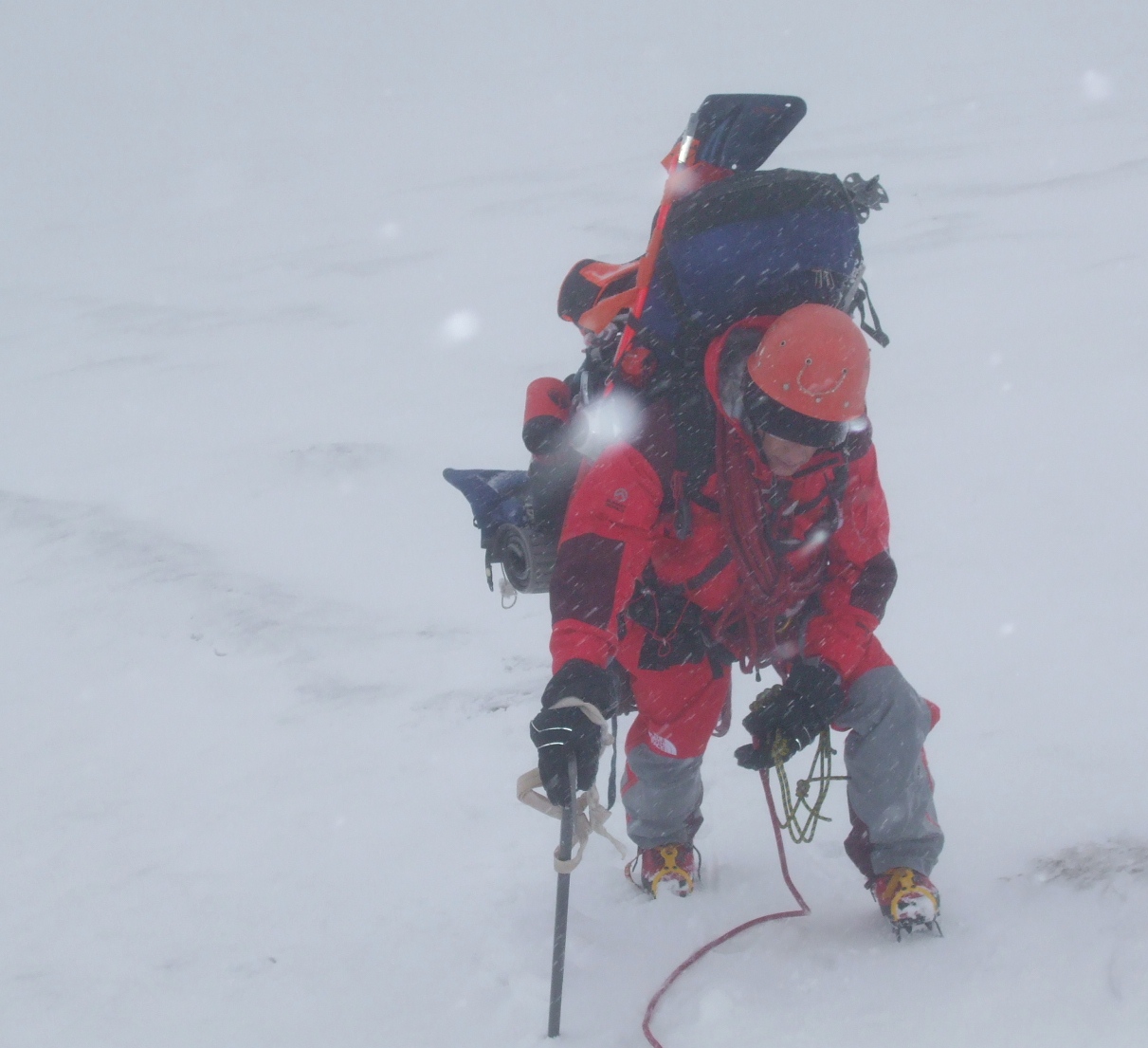Take a Break–How Your Brain Decides When to “Take Five”
If you have ever been backpacking you know the problem neuroscientist Mathias Pessiglione and his colleagues are interested in solving–when to take a break. This subtle question may seem trivial at first, until you realize that this decision-making process affects every one of us, every day, in everything we do, and yet we don’t know how we do it. Whether you are an athlete or a desk jockey, success in your endeavor hinges on allocating your effort and rest periods optimally. In the extreme, this decision can be perilous. High altitude mountain climbers, who operate at the limits of human endurance and physiology in the freezing low-oxygen environment of the world’s highest mountains, manage rests rigorously (even down to taking rest intervals every few paces), but even long-haul truck drivers grapple with this decision as a potential life-or-death matter.
The decision to stop and rest is a difficult one, involving balancing many different factors. Resting too frequently or for too long will undermine reaching the goal. On the other hand, pushing on past the point of utter fatigue can be just as counterproductive and sometimes dangerous. Yet all of this neural computation governing our behavior in prolonged exertion is solved by our brain largely unconsciously.
In a paper published in the Proceedings of the National Academy of Sciences, USA, Florent Meyniel and colleagues at the Hôpital de la Pitié-Salpêtrière, in Paris, asked participants to squeeze a handgrip to win a given amount of money. The cash payoff was proportional to the time spent in exertion above a given force level, versus time spent resting. The researchers were able to manipulate the force required to squeeze the handgrip to vary the costs and benefits. The size of the incentive was always displayed to the subject just before each trial, but the difficulty of closing the handgrip was unknown until the subject began to squeeze it. In this way, researchers could measure precisely how the difficulty of the task affected how often breaks were taken, and for how long, and they could gauge the influence of motivation on how we allocate break time against effort.
The first findings are what one would expect: the subjects spent less time squeezing the grip as the difficulty of the task increased, and they spent more time squeezing and less time resting in direct proportion to the higher incentive of the monetary reward. But how did the brain decide when the cost/benefit balance had reached a point where taking a break was the best decision?
All of these studies were done while the participants were undergoing brain scans with a functional MRI machine, which enabled the scientists to see which parts of the brain were at work as the subjects were making this unconscious decision. They also used magnetoencephalography (MEG), to measure electrical activity in the brains of the subjects as they were being tested. What the researchers saw was that as the effort required to squeeze the grip increased, activity in certain brain regions also increased and the activity accumulated with prolonged effort. This included both the posterior insula, which is a region of cerebral cortex known to be involved in somatosensory function, as well as the ventromedial thalamus, deep inside the brain.
These two brain regions are part of a network known to be activated in response to physical pain. The new data showed that these regions continuously signal the costs of the effort and rejuvenation provided during the rest periods. Exactly what physiological or sensory input these brain regions monitor to determine the “cost” i.e., pain associated with prolonged effort, is not known. It might be muscle contraction or metabolic load, for example, but the signal these brain regions are constantly monitoring remains for now a mystery. What is known is that direct electrical stimulation of this brain region induces a painful sensation.
Monetary incentives slowed the accumulation of the cost signal in these brain regions during sustained effort, and they speeded the dissipation of the “cost signal” during the break. The authors speculate that this might reflect a motivational signal being subtracted from the cost. They propose that these positive signals could arise from other brain circuits that are involved in reward processing, such as the ventral striatum or other regions.
Interestingly, the range over which the cost signal in these brain regions fluctuates was also adjusted by the incentive. This, they believe could be related to the psychological phenomenon that when motivated, we literally push back our limits, allowing our body to work closer to exhaustion. Even a mountain climber thoroughly exhausted and collapsed in his tracks, would instantly spring to his feet with newfound energy and flee upon hearing the thunder of an avalanche. Placebos (sugar pills believed by a patient to be medicine) have been shown to reduce responses to painful stimulation in these brain regions. Therefore the brain can adjust the sensitivity of its pain circuits depending on expectations.
I asked Dr. Pessiglione if this new insight might help explain the extraordinary abilities of elite athletes like Lance Armstrong (before we learned he was cheating) to push on when others quit. He says that individual differences in brain signals among the test subjects does account for their differences in behavior, but that it is not safe to infer how the brain of Lance Armstrong might have behaved in these experiments from studies performed on lay people. Elite athletes could be different. “It is actually a very interesting issue whether elite athletes show outstanding performance by pushing to their limit the same regulatory mechanisms we reveal in our study or whether completely different mechanisms are involved,” Pessiglione says.

Author waiting for activity in his posterior insula and ventromedial thalamus to subside on Mount Rainier. Photo Credit, Dylan Fields.
One wonders if these new findings could lead to new kinds of performance enhancing drugs that strengthen the brain instead of the body. “We are currently testing drugs on this paradigm in our lab,” he says. This includes analgesic drugs (pain killers) such as morphine that might slow the cost accumulation in the pain regions, and drugs that boost motivation, such as dopamine enhancers. “Amphetamine for instance may push back the bounds of cost accumulation,” he notes. Developing performance enhancing drugs is not what Pessiglione and his colleagues are interested in achieving. At present their new findings are only correlations. The next step will be to seek proof of causation, and by using pain killers in future studies to change the subject’s sense of pain, they can determine if the time allocated to work and rest changes. This would provide direct evidence that these correlations between brain responses and behavior are linked causally.
How can you apply this new information to optimize your own effort and rest allocation? Dr. Pessiglione suggests that, “Perhaps they should listen to their brain signals! That is, instead of planning breaks in advance, monitor their fatigue online, and have a break when it reaches a given threshold. The other possibility is to increase the incentive.”
The results of this investigation provide a neurobiological correlate of a human behavior previously considered within the realms of psychology and philosophy. These new data illuminate how the brain decides when to cease work and rest. From how athletes pace their running in competition, to when people take breaks during work, these brain regions constantly monitor the cost/benefit of sustaining effort, and add into the calculation the incentive anticipated upon reaching the goal, to determine when to stop and take a break.
Reference:
Meyniel et al., (2013) Neurocomputational account of how the human brain decides when to have a break. PNAS, doi/10.1073/pnas.1211925110.
This article was first published on my blog on BrainFacts.org
